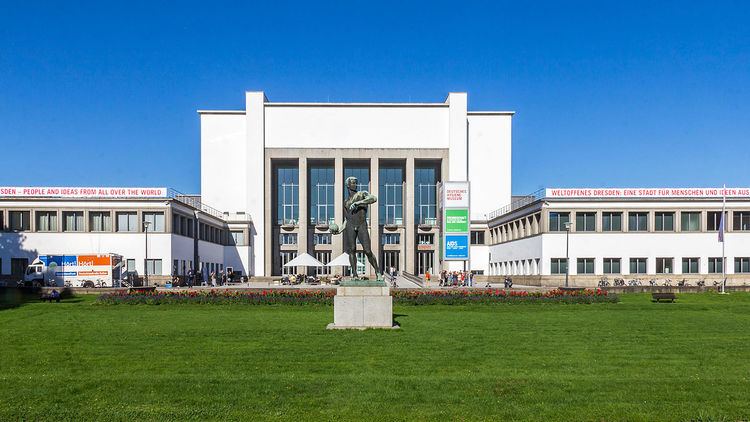Established 1912 Website dhmd.de | Visitors 280,000 Phone +49 351 48460 | |
 | ||
Hours Closed now Sunday10AM–6PMMondayClosedTuesday10AM–6PMWednesday10AM–6PMThursday10AM–6PMFriday10AM–6PMSaturday10AM–6PM Similar Albertinum, Grünes Gewölbe, Dresden Transport Museum, Dresden Castle, Großer Garten Profiles | ||
German hygiene museum ep 4 dave in deutschland a year abroad blog the special dave
The German Hygiene Museum (German: Deutsches Hygiene-Museum) is a medical museum in Dresden, Germany. It conceives itself today as a "forum for science, culture and society". It is a popular venue for events and exhibitions, and is among the most visited museums in Dresden, with around 280,000 visitors per year.
Contents
- German hygiene museum ep 4 dave in deutschland a year abroad blog the special dave
- History
- Exhibitions collection and other activities
- References
History
The museum was founded in 1912 by Karl August Lingner, a Dresden businessman and manufacturer of hygiene products, as a permanent "public venue for healthcare education", following the first International Hygiene Exhibition in 1911.
The second International Hygiene Exhibition was held in 1930/31, in a building erected west of the Großer Garten park according to plans designed by Wilhelm Kreis, which became the museum's permanent home. One of the biggest attractions was, and remains, a transparent model of a human being, the Gläserner Mensch or Transparent Man, of which many copies have subsequently been made for other museums.
During the Third Reich the museum came under the influence of the Nazis, who used it to produce material propagandising their racial ideology and promoting eugenics. Various Nazi government offices relocated to the museum between 1933 and 1941, and the German Labour Front's Reichsberufswettkampf (National Vocational Competition) was held there in 1944. Large parts of the building and collection were destroyed by the bombing of Dresden in 1945.
In the GDR-era the museum resumed its role as a communicator of public health information. Following reunification the museum was reconceived and modernised, starting in 1991. In 2001 it was included in the German government's Blue Book, a list of around 20 so-called "Cultural Lighthouses" – cultural institutions of national importance in the former East Germany – in an association called the KNK. Between 2001 and 2005 the museum was renovated and partly rebuilt under the architect Peter Kulka.
Exhibitions, collection and other activities
The museum's permanent features are the exhibition "Human Adventure" (Abenteuer Mensch), covering the human race, the body, and health in its cultural and social contexts, and a children's museum of the senses.
The museum owns an extensive collection of around 45,000 items documenting the public promotion of bodily awareness and healthy day-to-day behaviour, mostly from the early 20th century onwards.
There is a regular program of temporary exhibitions on social or scientific issues. Recent examples have included "Religious Energy", "What Is Beautiful?" and "War and Medicine". The museum also organises scientific and cultural events, including talks, meetings, debates, readings, and concerts.
